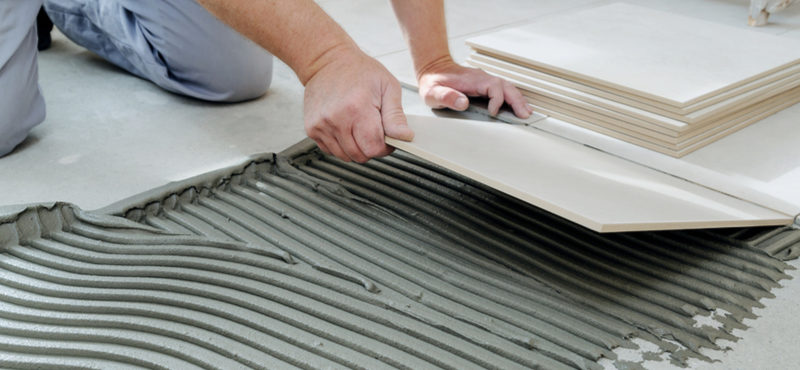When it comes a full-fledged kitchen remodel or the simple addition of new kitchen floors, tile is among the top choices. Why? You probably already know – tile is durable, stain and water resistant, long lasting, and, well, hard to beat. In fact tile can stand up to the foot traffic of kids, pets, extended family, friends, while remaining nearly impervious to spills, stains, and odors. On top of that, tile is beautiful, comes in a vast array of shapes, styles, colors, and patterns, giving it the ability to complement any décor. Tile – stone, ceramic, and porcelain – also offers a wide range of prices with the promise of fitting into nearly any budget, large or small.
All About Tile Flooring
Tile is manufactured in several types with stone, ceramic, and porcelain being the most popular. Let’s take a look at each to help you see the differences and choose the best tile flooring for your kitchen.
- Stone Floor Tiles – Stone tiles are natural stone – granite, limestone, marble, slate, travertine – which means they are naturally porous and need to be sealed every two to three years for the greatest durability and longevity. Stone tiles can be polished to a beautiful shine or honed to provide greater traction. Stone, while unique and beautiful is the most costly option. Large square tiles are trending because they make kitchens look more spacious while minimizing grout lines. Even so, rectangular, octagonal, and hexagonal varieties provide a bigger style statement. Including multiple shapes, sizes, and styles can help you create a distinctive one of a kind look in your kitchen.
- Ceramic Floor Tiles – Ceramic tiles may be among the most well-known. Sometimes labeled “non-porcelain,” ceramic tiles are manufactured from clay, making it softer than porcelain, and more easy to install. Ceramic tiles are more porous than porcelain and should be glazed to deliver the spill and stain resistance homeowners desire. The glazing process also allows you to choose virtually any color tile to complement their kitchen style.
- Porcelain Floor Tiles – Porcelain tile is manufactured from a similar clay mixture with sand added for greater durability. In addition, the creation of porcelain floor tiles includes a heat/pressure process to increase hardness and durability while decreasing porousness. This process makes porcelain tiles the ideal choice for high traffic areas like your kitchen. Porcelain tiles can be glazed to produce a unique colored surface with a glass-like finish or unglazed to showcase the color and patter of the clay throughout. Unglazed porcelain floor tiles are more forgiving, less likely to show scratches and wear.
Embracing the Advantages and Overcoming The Disadvantages
While tile boasts a number of advantages, as with all types of kitchen flooring, it does have a few minor drawbacks you should consider when making your selection. One of the reasons tile is a top choice is its hardness and versatility, which can also make it a challenge for home chefs, sometimes causing back and leg discomfort for those who spend lots of time in the kitchen. Comfortable shoes for the chef and area rugs for the tile flooring can alleviate the problem. Another issue arises when dishes, glasses, and coffee mugs are dropped and break from the impact of hard tile flooring.
Tile, as mentioned, is long-lasting and durable, beautiful and impervious to stains, odors, and bacteria, but the grout used alongside tile can stain and discolor with time. Having tile and grout sealed can help, as can wiping up spills immediately and cleaning tile floors regularly. Tile, while complementing nearly any style, can be slippery when it is wet, so if solid footing is a concern, choose certified, slip-resistant tiles.

